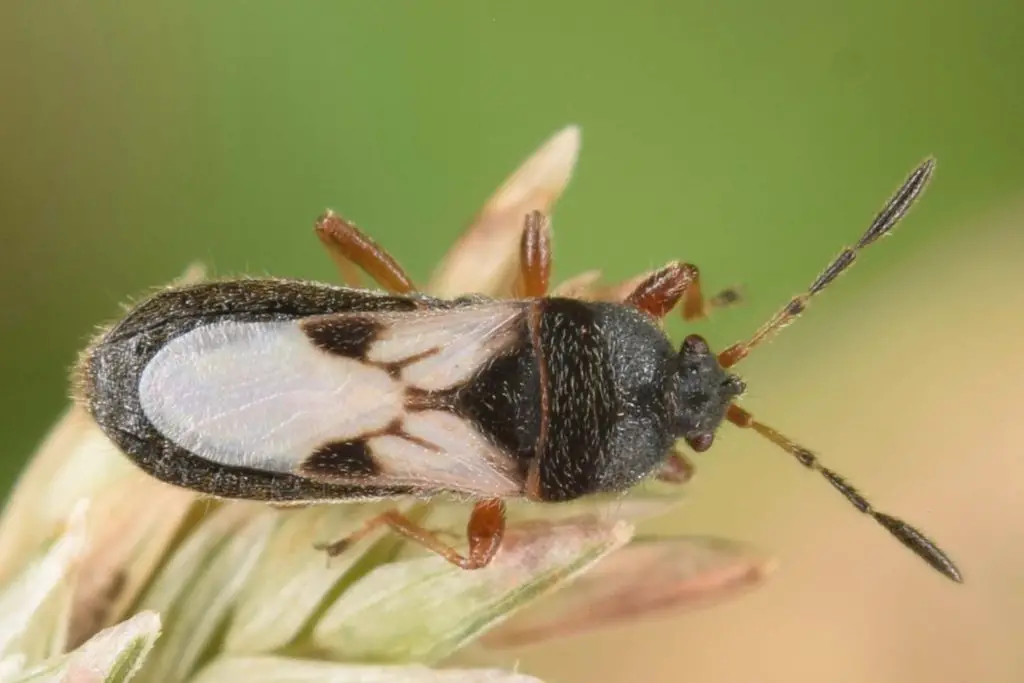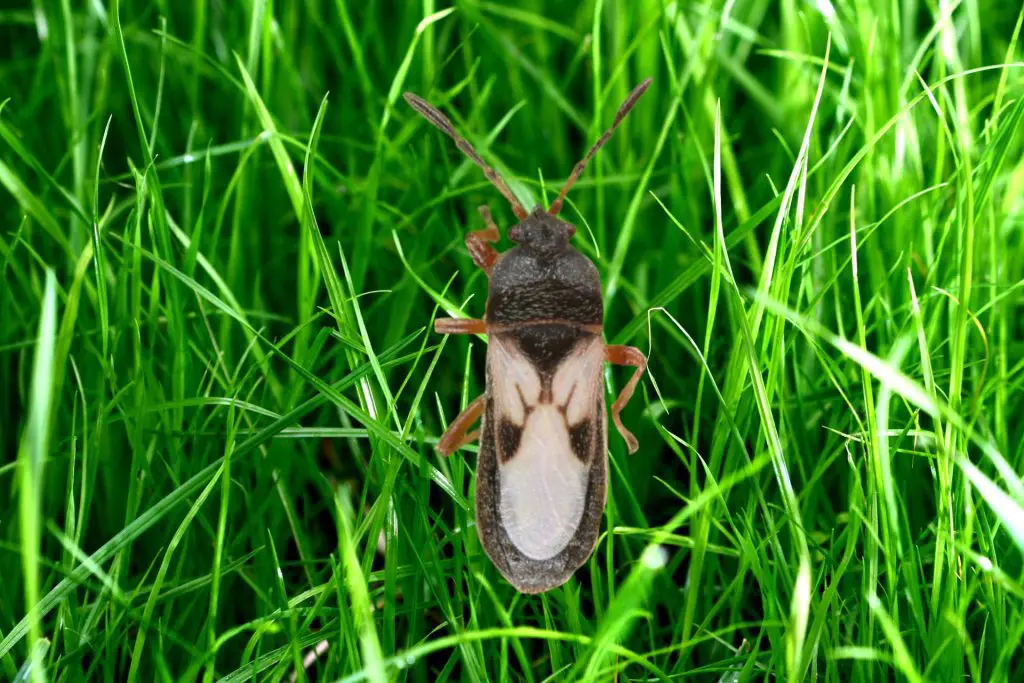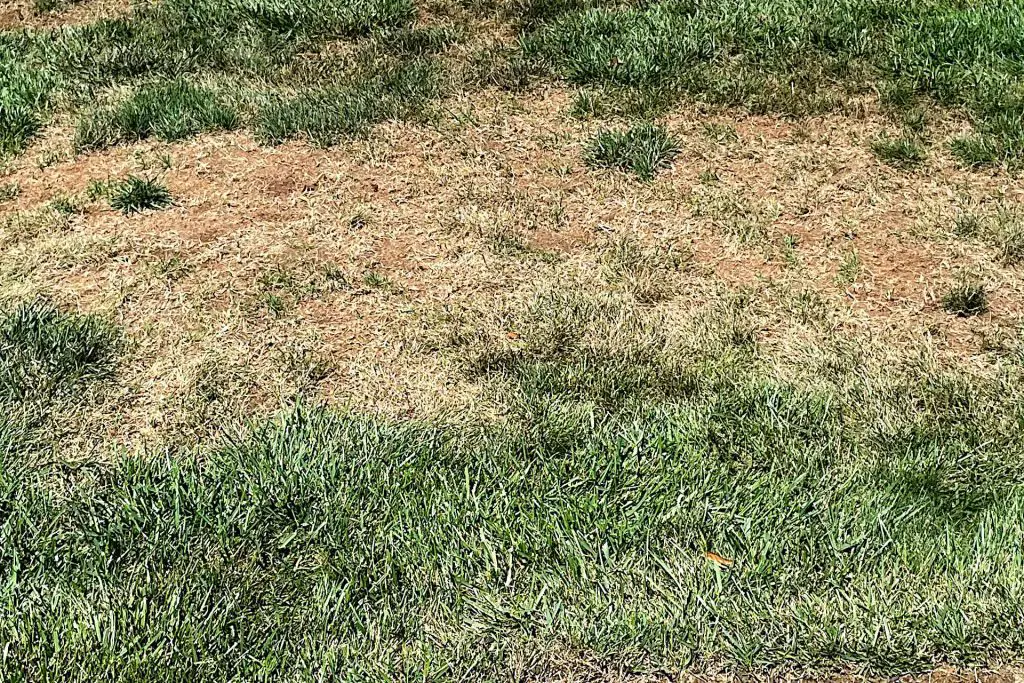Chich Bugs: What Are They and Why Are They Dangerous for Your Lawn
- Chinch bugs are a common pest of lawns, gardens, and ornamental plants and are most active in late summer and early fall.
- Chinch bugs are small, soft-bodied insects that feed on grasses, weeds, and other plants. They are usually less than 1/4 inch long, with brownish-red bodies covered with hairs.
- Different species of chinch bugs are found in different regions of the US.
- Chinch bugs survive on a wide range of food sources and thrive in warm, moist environments and near human dwellings.
One of the most feared problems homeowners with beautiful lawns face is the worry of a chinch bug infestation. They are known to be a common pest of lawns, gardens, and ornamental plants.
In this article, we will look at what a chinch bug is, where in the country you are most likely to face the threat of chinch bugs, and the sort of damage that they can do to your lawn or other grass areas.
What is a chinch bug?
| Chinch Bugs Lawn: Technical Information | Details |
|---|---|
| Determined As: | Pest |
| Scientific Name: | Blissus leucopterus |
| Common Name: | chinch bug |
| Taxonomic Tree | |
| Domain: | Eukaryota |
| Kingdom: | Metazoa |
| Phylum: | Arthropoda |
Chinch bugs, or Blissus leucopterusare, are tiny, soft-bodied insects that feed on grasses, weeds, and other plants. They are most often found in late summer and early fall. Chinch bugs can be mistaken for aphids or spider mites but have two pairs of wings instead of four. The first pair of wings is used to fly short distances, while the second pair allows them to jump long distances.
Chinch bugs are usually less than 1/4 inch long, with brownish-red bodies covered with hairs. Their antennae are black, and their legs are yellow.
Types of Chich Bugs and Where They Are Commonly Found

There are several different chinch bug species, but the following are the most common:
- The common chinch bug is found from Connecticut westward to Ohio and south as far as mid-Texas and across to mid-Georgia.
- The hairy chinch bug is commonly found in portions of the common chinch bug’s northern territory, but it can also be found across the northeastern states.
- The southern chinch bug is the most common type found in the southeast.
- The western chinch bug may be found in States ranging from Oklahoma and Texas to California.
Distinguishing Features of Hairy Chinch Bugs
Hairy chinch bugs have a unique appearance that sets them apart from other types. They look like tiny wasps because of their hairy appearance. They also resemble ladybugs and lacewings, sometimes making them difficult to identify.
Chinch Habitat and Reproduction
Chinch Bugs: A Plant Pest That Can Survive on a Wide Variety of Foods
Chinch bugs are known to be polyphagous, which means they can survive on a wide variety of foods. They are commonly found in warm, moist environments such as gardens, flower beds, and compost piles. Chinch bugs prefer to live near human dwellings as these areas provide ample food and shelter.
Egg Laying and Development
During the spring and summer seasons, chinch bugs lay their eggs on the underside of leaves, stems, and sometimes flowers. These eggs hatch within two weeks, and the nymphs begin eating the plant material after hatching. The nymphs continue to eat until they reach maturity, dropping off the plant and crawling into nearby soil to pupate.
Chinch Bug Life Cycle: Stages of Development
A chinch bug goes through four life stages: eggs, nymphs, adults, and mating. The adult females will lay eggs in the soil of lawns and gardens, and the eggs will hatch in about 10 days. The nymphs will then go through five developmental stages before becoming adults. The entire lifecycle from egg to adult takes about 6 weeks during summer months.
The Five Developmental Stages of Nymphs
The nymphs go through five developmental stages before reaching maturity. These stages are known as instars and are characterized by a gradual increase in size and the development of new body parts.
- First Instar: The first instar is the smallest stage and is characterized by a reddish color and the presence of six legs.
- Second Instar: The second instar is slightly larger and develops eight legs.
- Third Instar: The third instar is the first stage where the nymphs develop wings, although they are not yet functional.
- Fourth Instar: The fourth instar is characterized by the development of functional wings and the ability to fly.
- Fifth Instar: The final instar stage is the last stage before maturity, and the chinch bugs reach their full size and develop their characteristic black and white coloration.”
It’s worth noting that the developmental stages may vary depending on the temperature and humidity. They also may not develop as quickly in cool or dry conditions.
Identifying Chinch Bugs

When chinch bugs hatch from eggs, they do not have wings. As they develop, they develop wings and become adults. Adults can be identified by the wings’ presence, making them easily distinguishable from nymphs.
You can identify whether you have a chinch bug infestation by observing unusual lawn discoloring and damage and conducting a float test.
Types of Damage Caused by Chinch Bugs
When chinch bugs emerge from the soil, they return to living on vegetation. This process repeats itself every summer, resulting in chinch bugs leaving behind holes in the turf, which allows moisture and air to enter the grass. These holes also make it easier for diseases to spread.
Chinch bugs can also damage seedlings by chewing on the stem and sucking sap from the plant, weakening the plant and making it more susceptible to disease. Chinch bugs can cause serious damage to turfgrass if left untreated, and it’s important to address them as soon as possible to prevent further damage to your lawn
Chinch bugs are known to eat some types of grasses and weeds, but they aren’t always considered destructive pests. Some species help control certain weeds, while others help protect the turf. In addition, some grass varieties are more resistant to chinch bugs than others, which can help prevent chinch bug lawn.
It’s a common misconception that chinch bugs cause damage only during the summer months, but they can be found all year round.
Damage to Grass

Chinch bugs feed on grass blades, feeding on the roots of grasses. They inject the grass blades with poison, chinch bug saliva, causing plant mortality. A heavy infestation of these lawn pests may result in considerable plant death in heavily infected areas.
Chinch bugs feed on grasses and weeds and can cause serious damage to turfgrass if left untreated. They may also be seen on ornamental plants. They can also destroy seeds and young plants. When they attack seedlings, they chew on the stem and suck sap from the plant, weakening the plant and more susceptible to disease.
